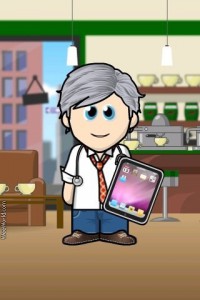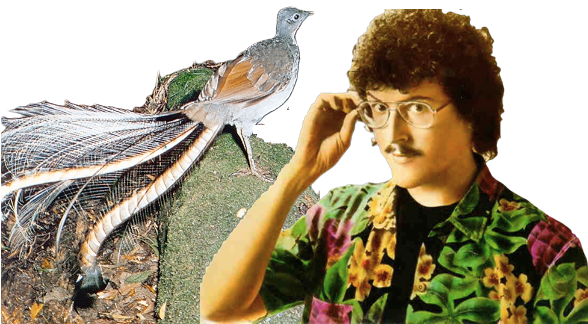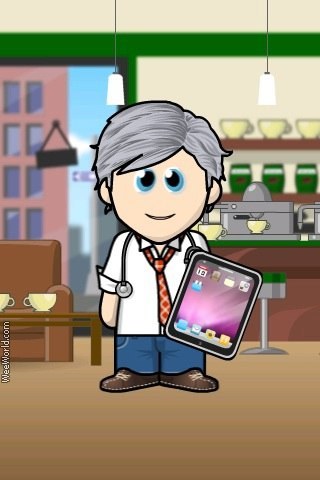The Common Cold is an infection of the nasal passages and upper always. The main symptoms are a runny or congested nose. It can be caused by a number of different viruses, the most common of which is ‘Rhinovirus’. Complications of a cold include sinusits, middle ear infections and worsening of lung disease in people who have underlying chest problems.
The cold is the most common infection in the industrialized world, and the major cause of days lost at work. Nonetheless, as it is non-fatal and gets better without intervention, it is considered a minor infection (except by my sister who books herself into Intensive Care at the first signs of a sniffle). Because it is so common, even a partially effective treatment would have a significant impact on the health and economy of the community.
There have been a number of studies looking for a way to reduce the duration of the common cold. The Australian Government’s HealthInSite discusses many of these. Results have been disappointing, and many proposed treatments (including Vitamin C, Echinacea and garlic) have been shown to be of no benefit. Indeed, sometimes the cure is worse than the disease. For example, since 2008 the Australian Therapeutic Goods Administration has recommended that cough and cold treatments not be given to children under age 2 at all.
‘The Cochrane Collaboration‘ is an International project that makes suggestions on medical treatments based on an analysis of the scientific evidence. The Collaboration does not actually conduct research itself, but collects and collates information from all the different experiments done by scientists around the world.
Recently it has tried to answer the question of whether Zinc is useful in the treatment or prevention of the common cold. It last looked at this question in 1999, at which time the answer was that there was no evidence of benefit from Zinc.
Zinc is an essential mineral that is naturally present in some foods, especially oysters, red meat and poultry. It is also available as a dietary supplement. Zinc has an important role in many cellular processes, and people who are deficient in zinc develop impairment of their immune system. It has also been suggested that zinc has a direct effect, on the rhinovirus. This is why many believe that Zinc should be good at preventing and treating colds.
The Office of Dietary Supplements in the US National Institute of Health has comprehensive information about Zinc.
Last week the Cochrane Collaboration had another look at the studies of ZInc and the common cold.
We found that zinc (lozenges or syrup) is beneficial in reducing the duration and severity of the common cold in healthy people, when taken within 24 hours of onset of symptoms. People taking zinc are also less likely to have persistence of their cold symptoms beyond seven days of treatment. Zinc supplementation for at least five months reduces incidence, school absenteeism and prescription of antibiotics for children with the common cold. .
They could not determine from the evidence who was most likely to benefit (for example, did vegetarians who may be low in Zinc have a better result) nor what dose people should use.
Zinc has a bitter taste and causes nausea, and in many of the studies people took a tablet every three hours while they were awake. Their recommendation is that more work needs to be done to answer these questions.
Some medical people are not yet enthusastic about a general recommendation to take zinc The studies that were available had only enrolled 1000 people all together – the main supportive study had only 50 people. Given the enormous number of people who catch a cold each year, this is a small sample size on which to base a recommendation.
Perhaps this is an example of what Jonah Lehrer calls ‘The Decline Effect’, as discussed in an interesting recent feature article in New Yorker Magazine.
Many ‘breakthroughs’ in medical science turn out not to be as beneficial as first thought some years after their announcement.
Glucosamine is a good example. A very early study suggested that 50% of people who take it had an improvement in the symptoms of arthritis in their knee. As time has passed, many later studies and clinical experience have failed to demonstrate a benefit anywhere near this extent, and many show that glucosamine is no better and reducing pain and improving function than fake pills. (The Cohrane Collaboration also has a report on Glucoasmine)
Similar ‘decline effects’ are also commonly seen in many prescribed medications
In the wake of recent publicity regarding the Cochrane’s ‘change of heart’ about Zinc, the UK’s National Health Service’s ‘Behind the Headlines’ discusses the issue of Zinc and the Common Cold,
They conclude:
More research will undoubtedly be published on this topic. Over time, this can be added to systematic reviews, such as this one. As the evidence grows, it will allow subgroup analyses that can answer outstanding questions about dose and who will benefit most.
Until then, the body of evidence for zinc supplementation seems to be swinging in favour of its benefit, and the choice of whether to take supplements is an individual one.
Many healthy people may not see the potential benefits of taking zinc as being worth the expense of supplements or the possible side effects, which can include nausea. Some preparations don’t taste very good, either. People should stick to recommended daily allowances, which are specified as maximum doses on supplement preparations.
Until more information is available, if you are like my sister Rosi and have a hard time with colds, you might like to give Zinc a whirl. It seems to work and it seems to be safe.
Perhaps we should run a local randomised controlled trial?
What I Learnt On 25th February in other years
View or Add Comment























 RSS - Posts
RSS - Posts

